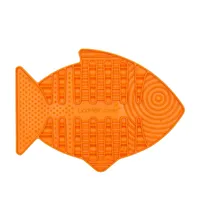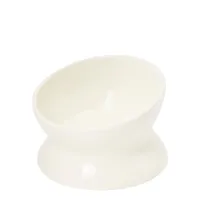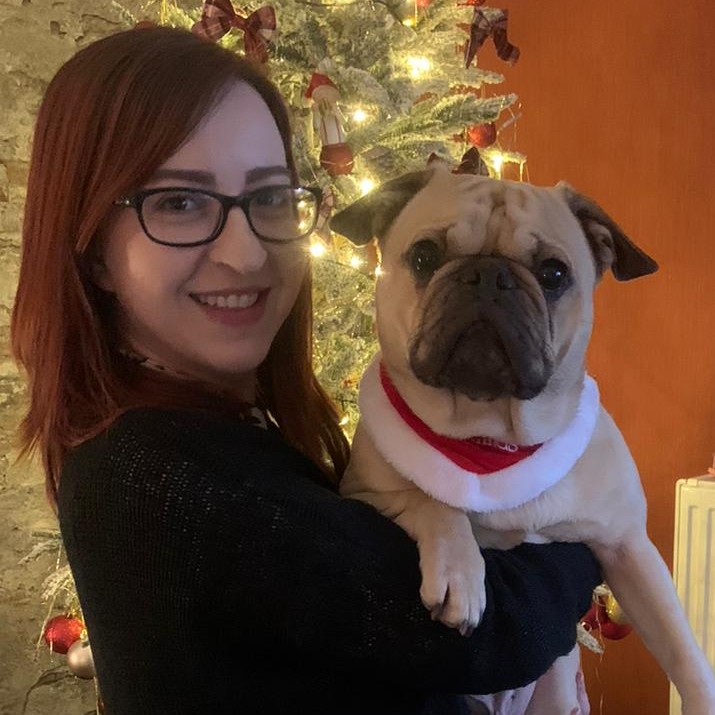Cat eating too fast? How to help if your cat overeats too quickly
Is your cat eating too fast? Here are 10 ways to slow them down.
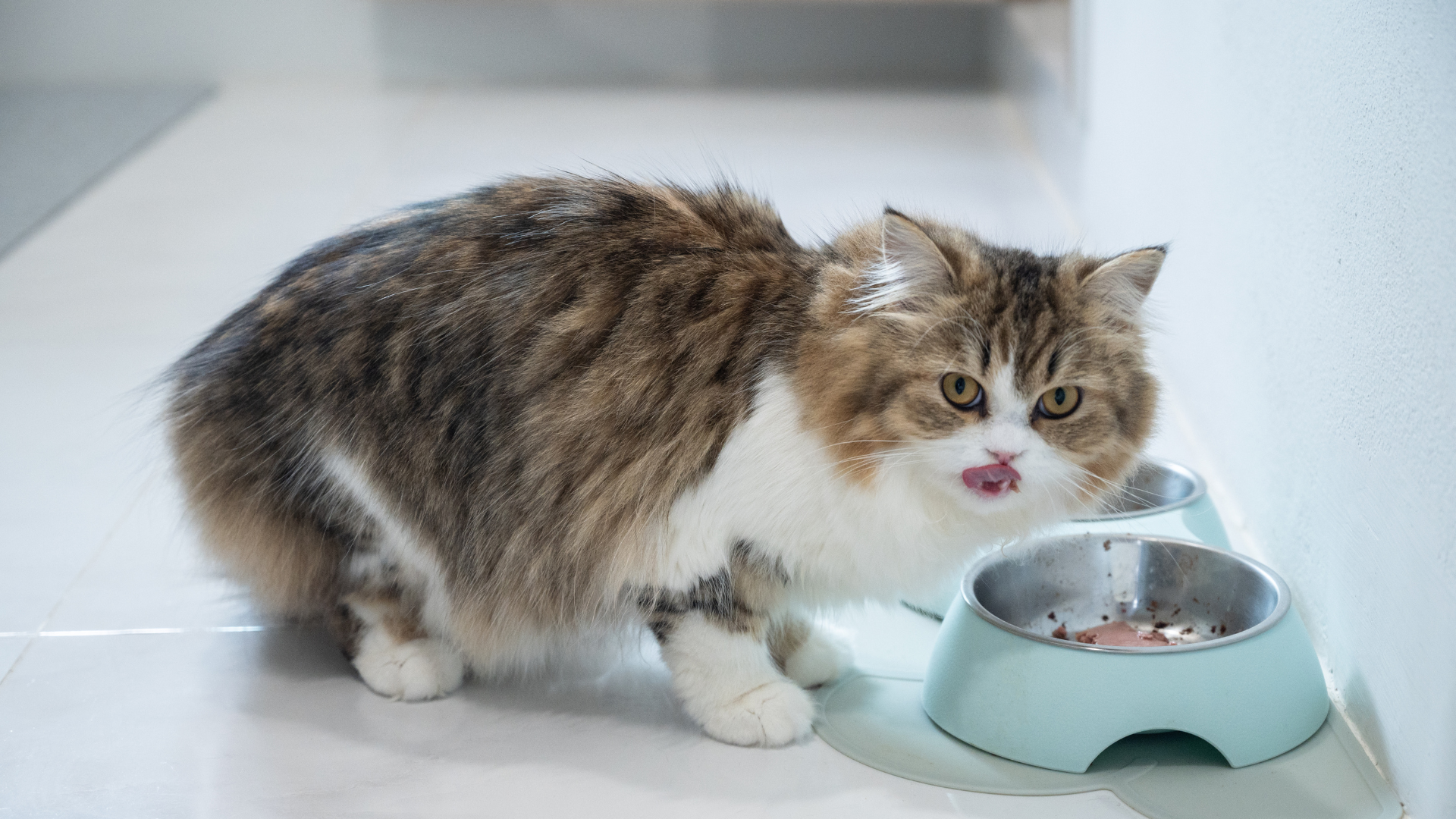
If your cat is eating too fast, then this can lead to health issues like obesity and cause them to vomit. From anxiety to overexcitement, there are lots of reasons why your feline friend might be wolfing their food down quickly - and we’ve explained them in this feature.
Thankfully, there are ways that you can help them, like feeding them from the best cat puzzle feeders and adding water to their food. To encourage your cat to eat little and often, you could also try one of the best automatic pet feeders.
However, if your cat is vomiting regularly, it’s important to get them checked over by a vet to rule out anything serious. Below, we’ve explained why your cat is eating too fast and 10 easy ways to slow them down:
Why do cats eat fast?
There are many reasons as to why a cat will gorge its food. They may be overexcited, feel bored or lonely, might be concerned that another animal (whether that be a fellow feline or a canine) will steal it, or perhaps just really love their food and can’t get enough of it. Is your cat bored? Read this feature to find out.
However, eating food so quickly will often lead to it being regurgitated shortly after.
Dr. Hannah Godfrey says: “Cats are naturally opportunistic feeders – they look for food in their environment and hunt, kill, and eat prey. This means that they don’t know when their next meal will be – unlike humans, so it’s understandable that it might be an instinctive behavior to eat their food quickly.
“Similarly, they could be worried about competition for food – whether they share a home with other pets who might take the opportunity to eat their food, or whether there are cats nearby in the neighborhood and it’s more of a perceived threat than an actual one. They’re also used to their prey trying to run away – and while there’s not much chance of that with wet food or kibble, it does mean they’re likely in the habit of eating quickly.
Get the best advice, tips and top tech for your beloved Pets
“Finally, they might actually be really hungry! If your cat struggles with guzzling their food, it might help to offer the same amount of food per day, but in smaller portions at more frequent intervals."
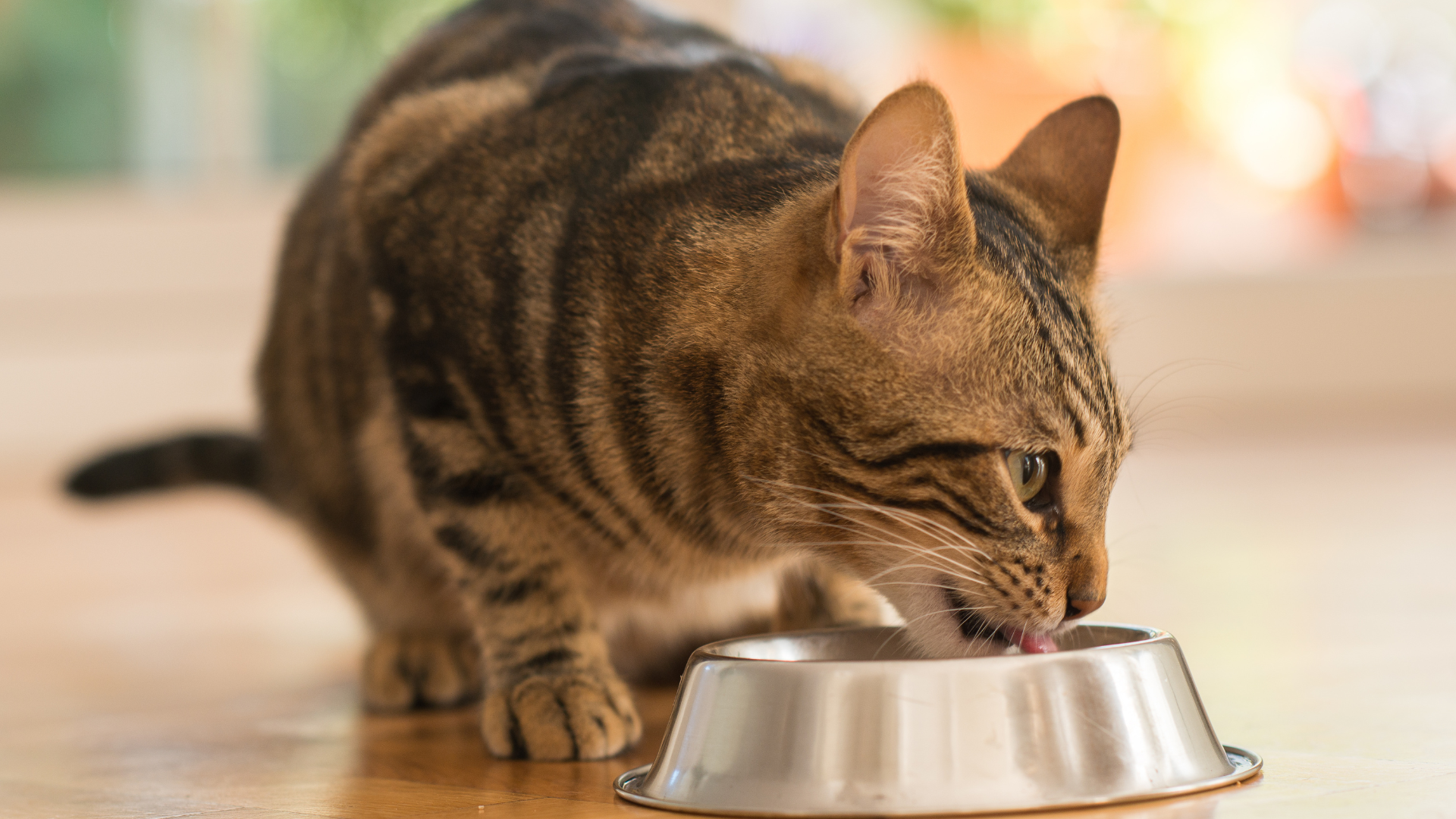
Providing that your favorite furry feline isn’t allergic to a particular brand or ingredient within their food or treat, regurgitation in cats is most common when eating dry food. This is because, when they eat it too quickly, they can eat too much, so when the food absorbs water and swells in their stomachs, it sends signals to the brain that they have overeaten and need to get rid of any excess food as quickly as possible.
It’s important to keep in mind that this logical reflex is very different to a cat vomiting. Should your cat be vomiting on a regular basis, especially if you notice other signs such as a change in their weight, you should seek professional medical advice from your veterinarian to rule out any underlying health conditions, such as hyperthyroidism or diabetes in cats, which naturally cause your cat to develop a more ravenous appetite. Our vet's guide to what to do if your cat is throwing up is a useful place to start should you have concerns in this area.
When it comes to eating too quickly, there are a number of ways in which you can help to slow your cat down, help them to enjoy what they’re eating and, ultimately, reduce how many times they regurgitate their food.
How to get your cat to eat slower
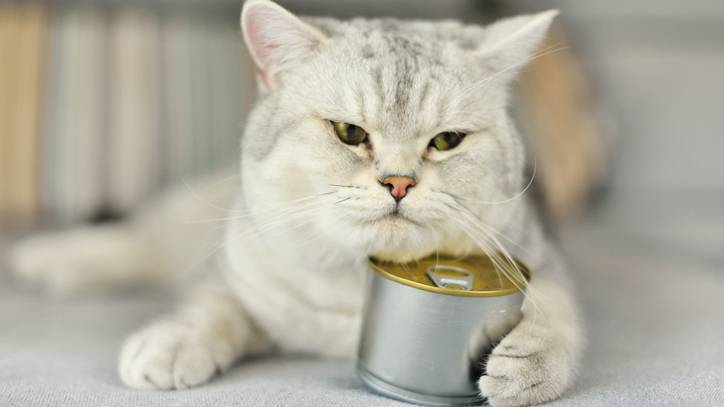
1. Spread your cat's food out
One of the easiest, and often most simple, solutions is to avoid using traditional cat food bowls in which all the food is piled up in a small space.
Instead, you could try spreading your feline’s meal out across a 9 by 13 inch baking pan. Although it may seem peculiar at first, this will slow your cat’s eating down because they have to make gradual movements every time they want another mouthful, meaning that they can’t simply gorge it all in one go.
2. Put obstacles in the way
Making it tricky for your cat to guzzle its food by adding obstacles, can be both a stimulating and beneficial experience for them.
Of course, the chosen obstacles must be too big for your kitty to eat yet easy to nudge out of the way so that they can reach their food, such as golf and ping pong balls.
You could also try specially designed puzzle feeders (also known as slow feeders), which challenge your feline to navigate various maze style fixtures and fitted obstacles to reach their food.
Another way to keep your cat active mentally and their eating at a reasonable pace, is through specialised cat treat toys, which must be nudged and pushed around to reveal the food that is hidden inside.
If your cat eats too fast, we recommend the LickiMat Casper. Not only does it reduce their pace, but it also provides them with much-needed mental stimulation. Our Staff Writer Megan tested it on her cats Chilli and Nala and said it really helped. The material is BPA, PVC, phthalate, and silicone-free.
3. Invest in an automatic feeder
Automatic pet feeders work on strategy - they open to a set schedule and work on the basis of feeding the feline little and often as a way of avoiding regurgitation.
However, in these types of instances where a cat is eating too fast, it’s important to avoid the automatic feeders that do not feature portion control options as this will simply encourage your feline to constantly eat and regurgitate more often.
4. Try a slow feeder cat bowl
Did you know you can get specially devised cat bowls for helping slow down their eating? The best slow feeder cat bowls are designed to spread your feline's food using a variety of different shapes that makes it harder for your cat to get at their grub.
Not only can they present a challenge to your feline and slow them down, they can also reduce the amount of calories that a cat is consuming.
5. Dish out smaller meals
The simplest way to stop your cat from gorging on their food is to serve up smaller meals throughout the day rather than bigger meals more regularly. This should mean that, as their meals are paced out and in smaller quantities, they're less likely to wolf down large amounts in one go. If you're unsure of how much to feed your cat, check out our helpful vet's guide.
6. Squash cat food
If your cat prefers wet cat food, use a spoon to squash it down into the bowl. This causes your feline friend to have to lick their food, ultimately leading to a slow down in ingesting. Your goal is prevent them from eating large chunks of food in one go.
7. Hide cat food
Cats are naturally excellent hunters, so why not use that instinct to your advantage? Rather than placing all the food into the bowl, look to hide small amounts of the best cat food around the house. Indoor cat hunting feeders are particularly useful for this and typically come as mouse-shaped dishes you can hide behind plant pots or kitchen appliances.
8. Add water
Thin down your cat's food by adding water. This can work for dry or wet food. By adding H2o, you'll slow down your cat's intake of food plus it'll help them to feel fuller for longer.
An added benefit is that helps increase their water intake, which is ideal if your cat requires extra hydration.
9. Install a microchip cat flap
The best microchip cat flap will protect both your feline and your home from unwanted guests. If you suspect your cat is eating too fast because of invading neighboring felines, a microchip cat flap will keep them out helping to relax your cat come mealtime.
10. Try an anti-vomit bowl
If you're a cat parent, then you might have wondered, ‘Do anti-vomit bowls work?’ Expert vet Dr. Catherine Barnette says that they might be helpful for cats with megaesophagus, or those with mobility, swallowing, or eating issues. She explains that they “allow gravity to assist in moving food from the mouth to the stomach.”
However, there’s no scientific evidence to suggest that it prevents vomiting and you shouldn’t replace this for medical care. If you’re interested in trying one out, we’ve rounded up the best anti-vomit bowls for cats.
Frisco Double-Sided Ceramic Elevated Cat Bowl
This elevated cat bowl is designed to help with neck strain and is tilted to help your cat reach inside. It’s made from BPA and lead-free ceramic and is dishwasher-safe.
Wondering, ‘Should I elevate my cat’s food bowl? We asked a vet to find out. Or learn about how to prevent obesity in cats.

Hannah graduated from the Royal Veterinary College in 2011 and began work straight away at a busy mixed practice. Initially, she treated all species, but focused on small animals from 2014. She has a passion for soft tissue surgery, ultrasound, and canine and feline dentistry, having completed additional training in these areas.

Dr. Barnette is a graduate of the University of Florida, where she received both her B.S. in Zoology and her Doctor of Veterinary Medicine (DVM). She has 15 years of clinical experience as a small animal veterinarian, treating dogs, cats, and occasional exotic patients. She now works as a freelance veterinary writer, creating educational content for veterinarians, veterinary team members, and dedicated pet owners.
Chloe is a freelance writer, editor, and proofreader, who has more than ten years’ experience in creating animal-focussed content. From National Geographic to Animal Planet, Chloe’s passion for creating fact-filled features all about wildlife and the environment is evident. But it’s not just wild animals that Chloe’s fascinated by. Having written more than 75 articles for PetsRadar - and having her very own four-legged friend by her side - it’s no wonder that her love of dogs (and, of course, cats) has grown exponentially.
Her website, www.chloemaywrites.com, and social media pages - @ChloeMayWrites on Instagram, Facebook, and Twitter - showcase her knowledge through daily facts and trivia tidbits. For example, did you know that snails have teeth?!
